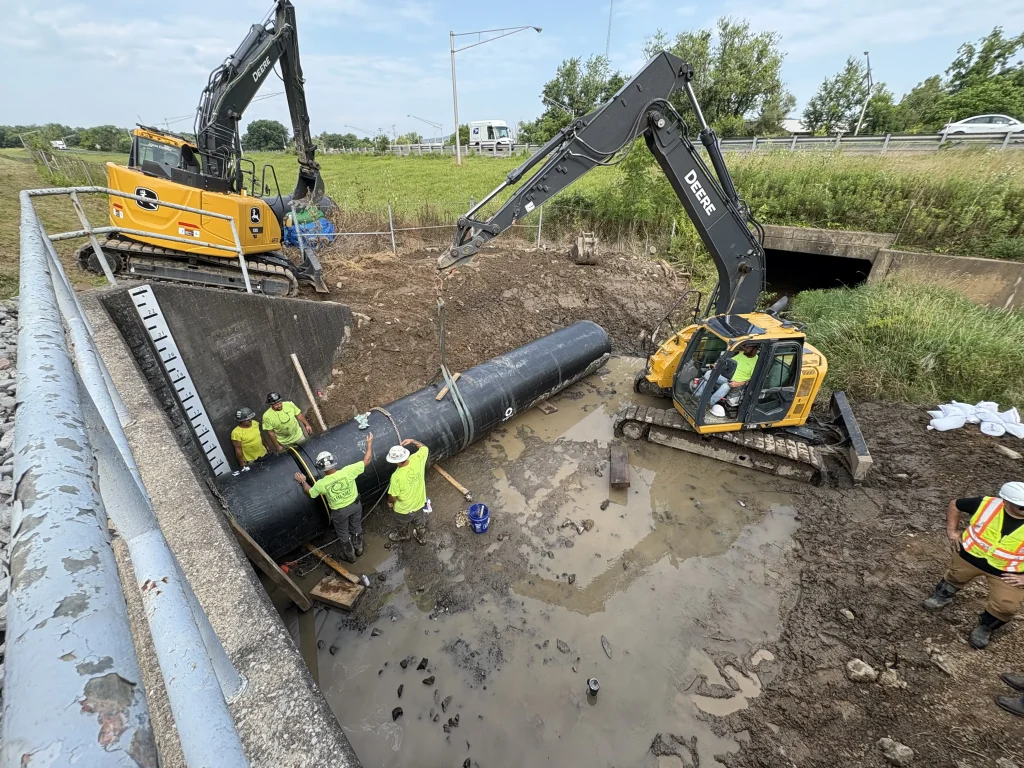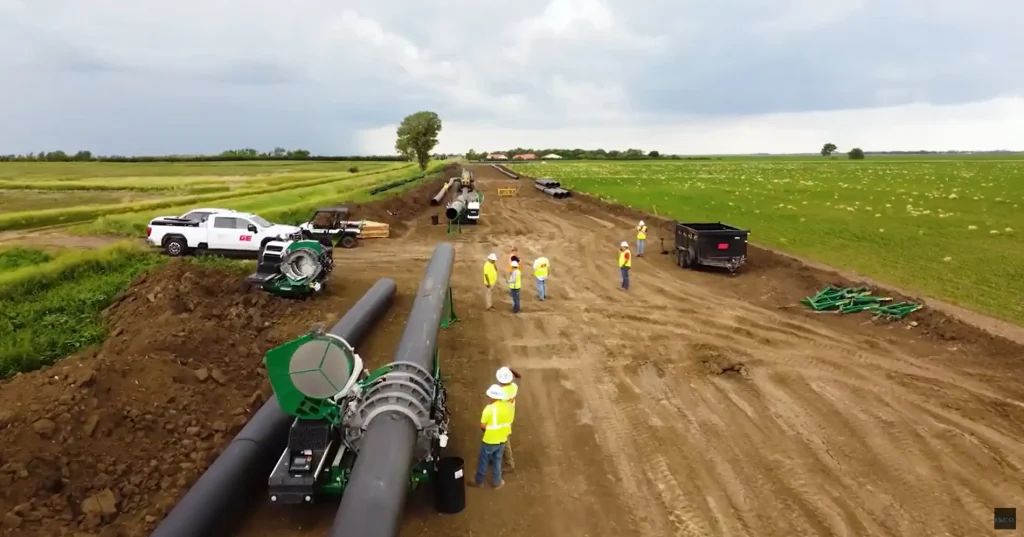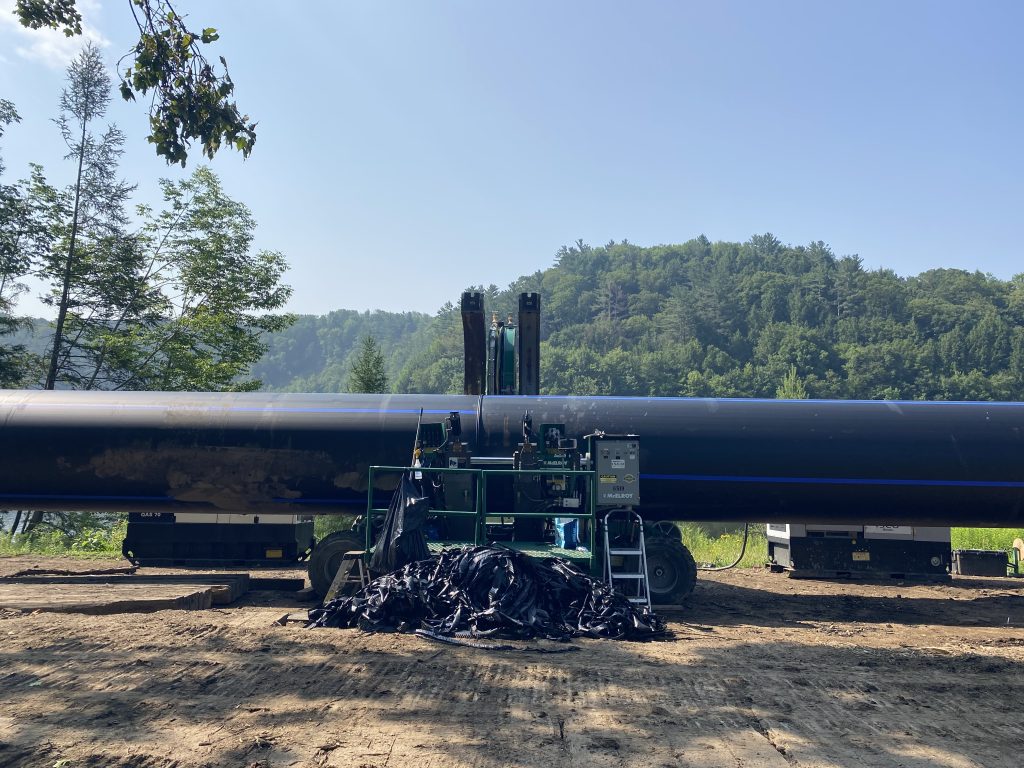Resources
Field Reports
Snap-Tite Weston, WV
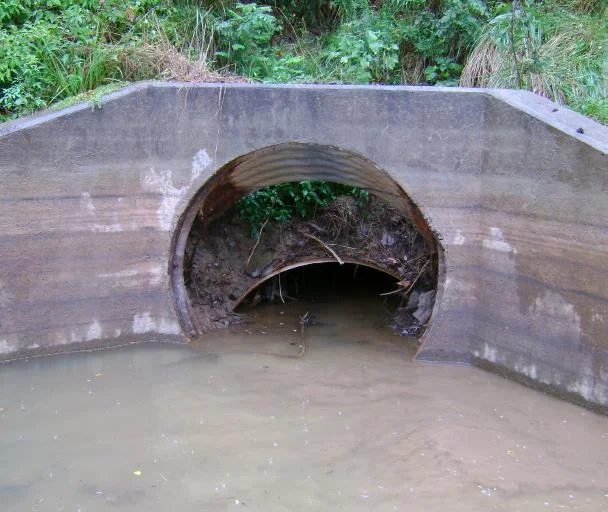
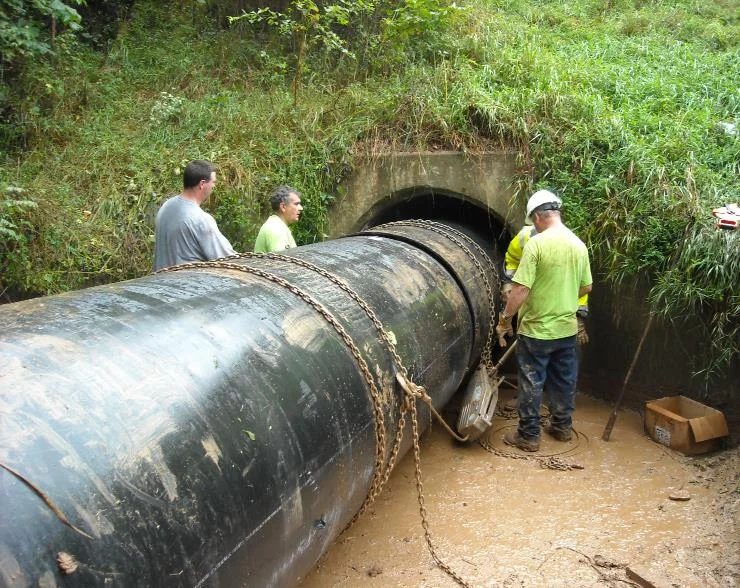
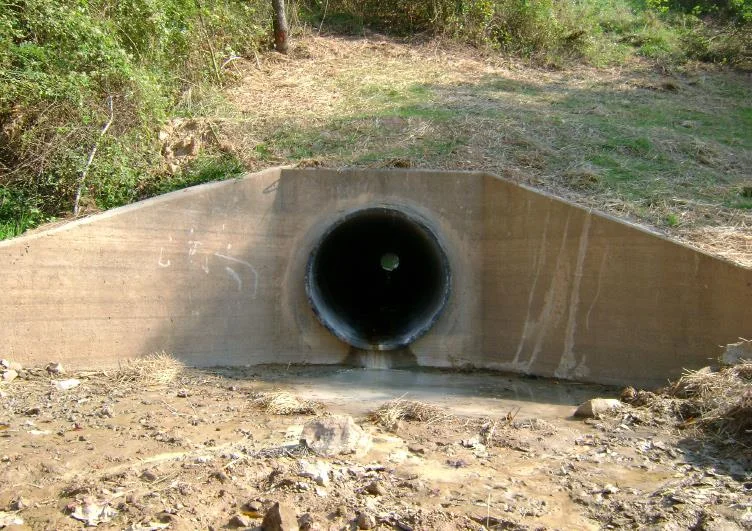
Our purpose is to help customers choose solutions which will insure that the process fits the application and do this reliably and cost-effectively. All information in this field report will assist the engineer to reduce cost and minimize future maintenance costs.
Abstract
Most of the existing corrugated metal pipe (CMP) installed as culverts under our roadways are reaching the end of their working life. There is an emerging widespread need to address this problem in an economical way that minimizes traffic disruption. West Virginia DOT considered replacing deteriorated CMP culverts. This Field Report presents an existing application where a deteriorated culvert was rehabilitated using Snap-Tite HDPE Pipe.
Introduction
Weston, WV had a deteriorated CMP Culvert under a roadway next to Stonewall Jackson Lake that was deteriorating and presented a costly dilemma. The culvert was over 50 feet below the roadway and the outlet end was collapsing at an alarming rate.
Conventional methods of dig-and-replace would have been too costly and time consuming. There was a need to evaluate a less costly alternative repair method.
The Problem
The rusted 66-inch CMP ran 156 feet long and under 50 feet of fill. The entire flow line was rusted out and the outlet side was starting to collapse. Due to the acidic waters in West Virginia, replacing this culvert with another CMP was not an option.
The Solution Applied
Ryan Harrington, the Snap-Tite Manufacturers Representative stopped by the WV DOH District 7 office for a visit and to introduce them to Snap-Tite. After talking in length with Doug Gould, staff engineer in design for the district, Doug remembered this culvert and asked Ryan if he would go out to the site with him to evaluate the possibility of utilizing Snap-Tite to rehab this failing culvert. Once at the site, Ryan and Doug walked through the culvert, took pictures and measurements for evaluation. Ryan then presented Doug and his staff a presentation on Snap-Tite specific to this application with pictures taken from the site.
It was determined that 54-inch OD Snap-Tite HDPE Pipe could be utilized to rehab this culvert. By using 54-inch Snap-Tite, the culvert would actually increase its flow rate by 28 percent of the original liner due to the smooth wall interior. District 7 decided to proceed with the purchase of the Snap-Tite liner for this application. Because of the uncertainty of the current pipe’s quickly deteriorating condition, a factory-made bullet nose was constructed which helps the liner move through the CMP without hanging up. Once the pipe was on the site it took the disforce crew less than half a working day to ‘snap’ all 156 feet of the Snap-Tite pipe together and
inserted into the old culvert. The crew then excavated the last 15 feet of the old CMP on the outlet end because it had totally collapsed by the time the work was started. Once the excavation was complete, the rest of the Snap-Tite pipe was pushed through to the existing headwall, then backfilled into place. The liner was then grouted into place a few days later, completing the project with a culvert better than before and with increased flow capabilities. Because of Snap-Tite’s ‘snap’ joint, the process increases the speed and ease of installation. It features a watertight ASTM approved gasket to withstand the grouting application. No special equipment was needed other than a backhoe, shovels and come-a-longs and chains. Snap-Tite is not affected by “hot soils” as the HDPE pipe works well in any pH range, with no corrosion.
